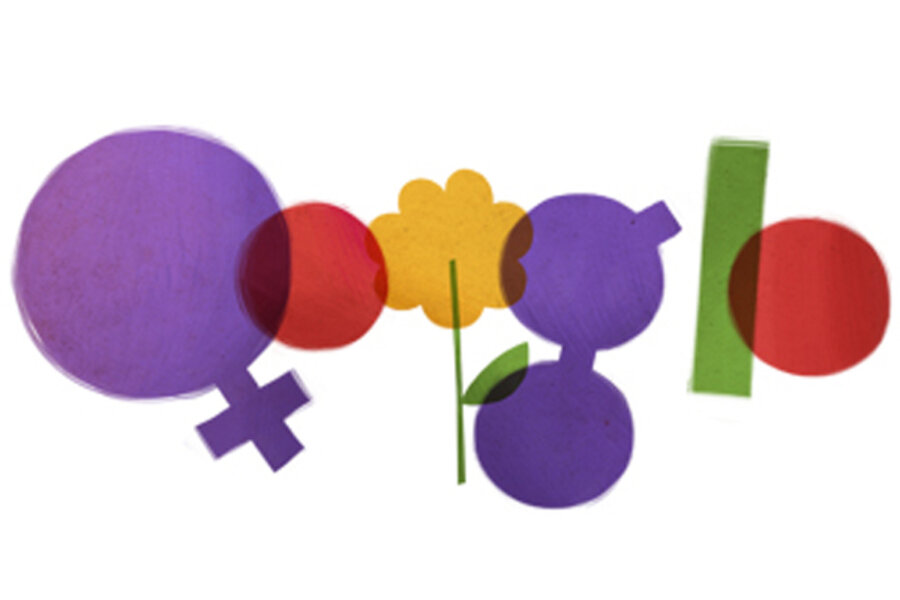International Women's Day: From communist roots to global holiday
Loading...
March 8 marks International Women's Day. The century-old holiday grew out of the communist movement, but since then has become many different things depending on where you live. For some, it's a somber reminder of the lingering inequality for women. Elsewhere, it's practically Valentine's Day.
How did a day of socialist protest become represented by the vernal splash of color in Thursday's Google doodle? The answer leads us back to the early 1900s.
People forget that women could not vote for president in the US until 1920, two years after World War I. Several states allowed women to vote in local elections. (New Jersey actually extended the right in 1776 – same year as the Declaration of Independence – but then took it away thirty years later.) It took a lot of convincing before Congress drafted the 19th Amendment, which now allows all Americans to vote.
A decade before the 19th Amendment, 15,000 women marched through New York City. This garment workers' strike demanded better pay, shorter working days (eight-hour days were a luxury back then), the right to vote, and an end to child labor. "They adopted the slogan 'Bread and Roses,' with bread symbolizing economic security and roses a better quality of life," writes the United Nations in its history of International Women's Day.
In 1909, the Socialist Party of America wanted to honor the March 8 strike. It created the first National Woman's Day, a time to rally against women's unfair position in American life.
Eventually, thanks to the Socialist Party and other suffrage movements, Washington got the message. Congress passed the 19th Amendment in 1919, but, as you may remember from high school, at least 36 states needed to ratify the bill before it became law. Collecting the necessary states took an extra year. In fact, four states did not ratify the 19th Amendment until the 1970s. Mississippi waited until 1984. Of course, Mississippi women could still vote. Ratifying it after 1920 was simply a symbolic gesture.
[ Video is no longer available. ]
But the Socialist Party's National Woman's Day had further reverberations.
In 1910, an international group called the Socialist International met in Copenhagen. There, German socialist Clara Zetkin suggested an international version of the American holiday. "The proposal was greeted with unanimous approval by the conference of over 100 women from 17 countries, which included the first three women elected to the Finnish Parliament," writes the UN.
The next year, four European countries celebrated International Women's Day. More than 1 million people across Austria, Denmark, Germany, and Switzerland rallied for women's rights. Observance spread year after year, eventually losing its overt socialist spin. International Women's Day is now an official holiday in 30 countries and widely observed in several others. InternationalWomensDay.com lists hundreds of events from around the world.
But the spirit of the day has taken on many forms. As the Monitor's Whitney Eulich writes, "Many women in China will have a half-day off of work in honor of IWD, and some employers even shower their female employees with gifts." Meanwhile, the "Turkmenistan government will honor mothers by awarding a special title and badge to women with eight or more children. Ireland will hold "a brunch for survivors of domestic abuse and violence."
The United Nations took a similarly serious tone. UN Secretary-General Ban Ki-moon recognized the considerable progress made since the first International Women's Day. “But, despite this momentum, there is a long way to go before women and girls can be said to enjoy the fundamental rights, freedom and dignity that are their birthright and that will guarantee their well-being,” said the Secretary-General on Wednesday.
Mr. Ban focused on rural women, but you can see room for improvement here in the US, where women make 77.4 cents for every dollar earned by a man, according to 2010 numbers from the National Committee on Pay Equality.
Google, for its part, took the opportunity for a commemorative doodle. The spring-themed illustration swapped out the Google G with the Roman symbol for Venus – a circle with a cross underneath. The emblem has become a universal emblem for women.
For more on how technology intersect daily life, follow Chris on Twitter @venturenaut.





